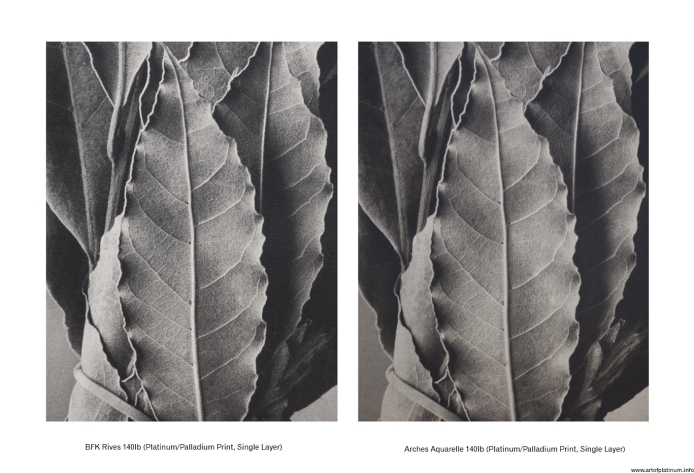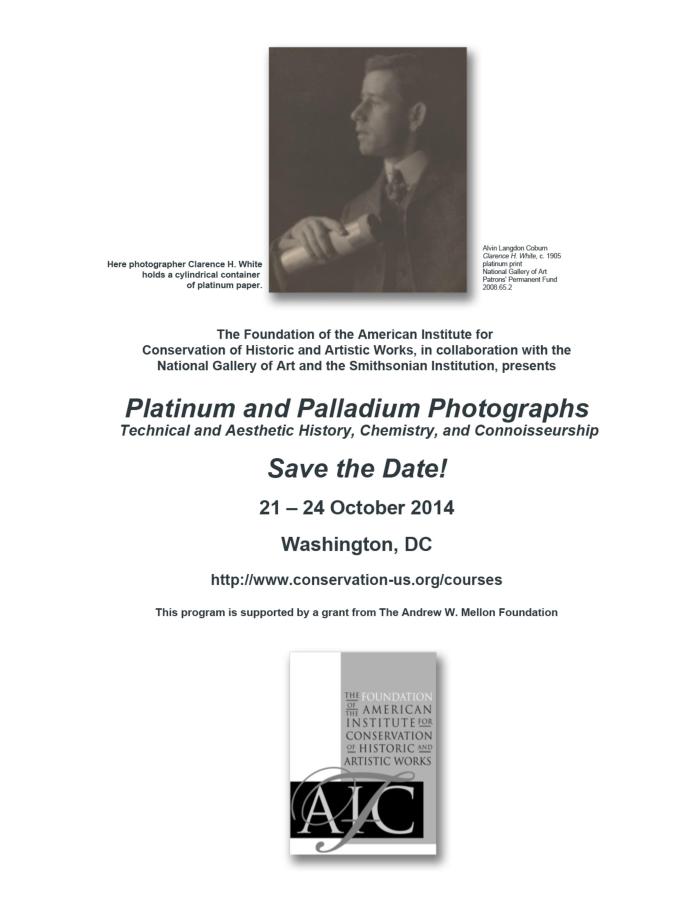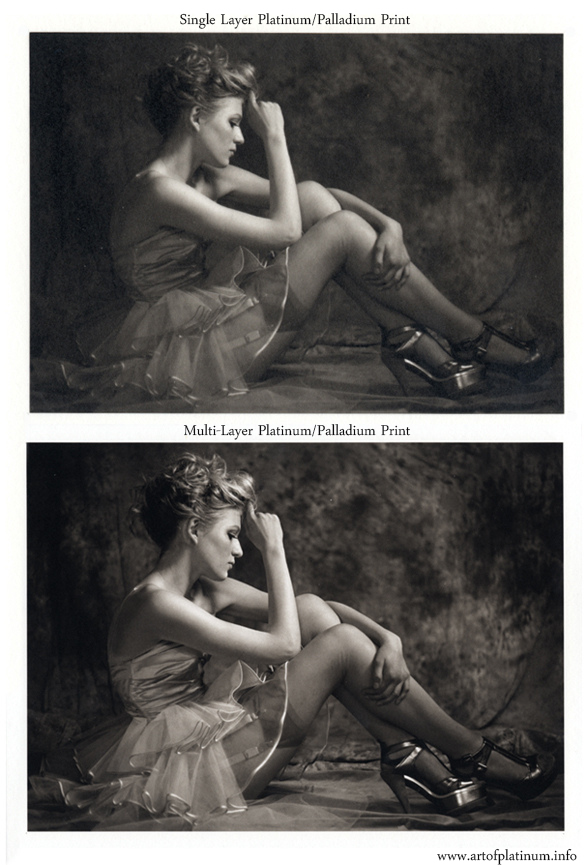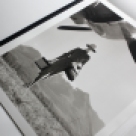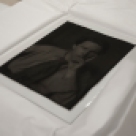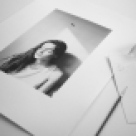Papers for Platinum Printing – Irving Penn’s favourites.
September 23, 2013
‘Over the years I must have spent thousands of hours silently brushing on liquid coatings, preparing each sheet in anticipation of reaching the perfect print’
Irving Penn

Irving Penn Platinum Prints, By Sarah Greenough, 2005
Irving Penn as well as being an exceptional photographer is widely regarded as the finest platinum printmaker of the 20th Century, he crafted some of the most exquisite, complex and valuable platinum prints that ever have existed. He placed great emphasis on selecting the appropriate paper for a particular image and tested a large number of different types, as Sarah Greenough’s insightful book Irving Penn’s Platinum Prints makes note;
‘Penn tried many different kinds of paper from England, France, Italy, and America, with varying surfaces-matte and glossy. Rives was his favourite although he experimented with Arches, Chatham, Milbourne,Strathmore, Crown and Sceptre, Fabriano, Hagle, and Whatman. Few however were able to withstand the repeated and length exposure to chemicals: Chatham “went to pieces; Whatman “bubbled, while Strathmore had a mechanical look.’
The vast majority of Penn’s multilayer platinum/palladium prints were created using BFK Rives which were bonded to aluminium to aid the papers dimensional stability through the successive exposure and development cycles. For his well known series on street findings his single layer prints were made using Arches & Bienfang e.g camel pack, see figure 2, although a great many of his well known cigarette images were multilayer prints on BFK Rives.

Figure 2, Camel Pack, 29 x 22 in, Single Layer Platinum-Palladium on Arches, printed 1975.
Having used BFK on and off for the last five years, it can be a challenging paper to work with due to the sensitizer being absorbed into the paper fibres far quicker than watercolour papers, however with perseverance it can yield wonderful results. What I especially like about the paper is that it has an absolute matt finish unlike many other papers used today for platinum printing; this is largely down to the fact that it is a traditional ‘printmaking’ type paper as opposed to a ‘watercolour’ type paper, such examples include Arches Platine, Cot 320, Arches Aquarelle. Although they have a matt finish they still exhibit a slight satine type sheen to the final dried down print. This is due to the different sizing agents used in the creation of the paper at the mills. Watercolour papers are generally hard sized to allow a greater brush ‘working time’ while printing making papers used for etching, letterpress are soft sized.
I recently compared two of Penn’s favourite papers BFK Rives and Arches Aquarelle as part of my on-going research into Penn’s working practices, the resulting prints are shown in Figure 3 & 4. The image for the test was originally shot on Polaroid 54 film by photographer John Lawrence Jones who I have been working with recently.
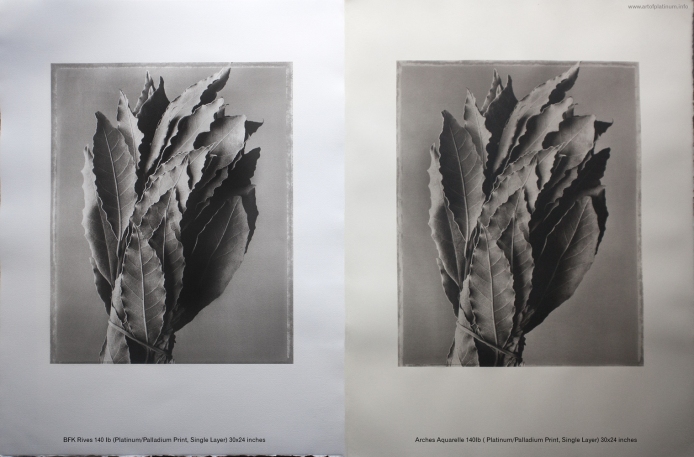
Figure 3, Bay Leaves, John Lawrence Jones, Platinum/Palladium Print 30″x24″, BFK Rives & Arches compare
The platinum/palladium print on the right was printed using Arches Aquarelle (140Ib) which is a mould made 100% cotton watercolour paper that is gelatine tub sized and has a smooth hot press finish with a slightly off white/light yellow hue. It is a hard sized paper and being HP it is able to resolve fine detail well, Camel Pack in Figure 2 attests this fact. BFK Rives shown on the left is a traditional printmaking paper originally designed for use for etching, it is 100% cotton, bright white with no OB’s, internally sized and has a softer textured ‘cold press’ type appearance on the front of the paper and a more absorbent wove surface than the Arches. Penn actually used the verso side of the paper for his multi-layer prints which is less textured then the recto which gives more working time when coating.
Both papers have desirable qualities and I can see why Penn chose to use them prolifically, they both give an earthy, charcoal type black which I find is one of the most appealing/tactile qualities of great platinum & palladium prints. They are both capable of achieving a high maximum density of black (Dmax) when coated with a single layer of platinum and palladium (1.4 to 1.5) although the dmax of BFK is significantly increased when used as a substrate for multi-layer printing. When properly treated BFK seems to have the ability to handle more successive coats of platinum and palladium chemistry and exposure cycles better than any other paper I have tested using this technique; perhaps this is why Penn liked the paper so much.
In terms of the final image hue/colour although the actual original paper colour plays a role in how the final dried down prints looks, far more significant is the type mix of platinum & palladium used aswell as the print developer and its temperature. At the time of the testing I was also comparing the difference between contact negatives created digitally from high resolution drum scans with contact negatives made conventionally in the darkroom. Both gave similar results as shown in figure 4, although to my eyes the print derived from the digitally created negative on BFK appears optically sharper in the final print despite the Arches paper having a smoother type finish to the textured one of BFK.
In the opening passage I referred to Penn’s platinum/palladium prints as some of the most complex ever created in the history of platinum printing. His multi-layer prints, as the name suggests, were made up of numerous layers unlike other prints which are made using a single layer of a mix of platinum and palladium.
Before becoming a master of photography Penn trained as an artist under Alexey Brodovitch where he became proficient at drawing and painting. It may be the case that some of the techniques he initially learned then, he went on to apply to his platinum printing technique. Most painters build up an image through a series of layers and this may have been an obvious approach for Penn to transfer to platinum printing.
If one examines his working notes (see here) he mentions creating separate negatives for each part of the tonal range of a specific image, for example creating a basic contact negative followed by a highlight mask with one of two overprintings of platinum or palladium for the shadows that would have the added benefit of increasing tonal separation and Dmax,
He also said about underprinting that…..it gives one the chance to abandon the plate early in the game if it seems that the highlights are too dark or too light, since the image is unalterable by further time or manipulation’
Overall he noted that ‘Using such a complex technique gave enormous scope to the printing possibilities.’ Going through his notes is fascinating and there is still much to learn from his technique. The research and experimentation continues….
Platinum and Palladium Print Symposium (2014)
September 21, 2013
Over a year away but one to put in the diary is a symposium on Platinum and Palladium prints to be held in Washington DC on the 21st October-24 October 2014, covering the Technical and Aesthetic history, Chemistry and Connoisseurship. Run by the foundation of the American Institute for the Conservation of Historic and Artistic Works, in collaboration with the National Gallery of Art and the Smithsonian Institution, this 4 day event will no doubt be very interesting with expert speakers from around the world taking part. Am looking forward to attending, my thanks to Mike Ware for alerting me to this event. Full detailed program of events to follow.
Multi-Layer Platinum Printing – The Kosel Method
September 9, 2013
I have been researching multi-layered platinum/palladium printing aswell as using the technique for a number of years now. I wrote an article on the subject for the International Journal of Photographic Art and Practice in 2010, a copy of which can be downloaded here. Quite a few people confuse this technique with either double coating platinum and palladium with one exposure cycle or the act of sandwiching a number of negatives together using one exposure cycle, it is neither. The process was used extensively by Irving Penn for a great number of his most celebrated images and initially involves bonding the printing substrate to aluminium to enable the paper to have dimensional stability.
A number of negatives are then created which can include shadow, midtone and highlight separations, these are then printed in succession going through multiple exposure and development cycles. Recently whilst researching the technique I came across an interesting article written by Walter Zimmerman. Published in 1913 it reviews the ‘Kosel’ method of multi-layer printing aswell as offering a direct translation of the technique, a pdf of the article can be downloaded here. Although he states he had not tested Kosel’s working practices he is somewhat critical of the approach suggesting the use of such a technique is ‘principally adapted to use of persons having an abundance of time and a liking to experiment‘ ( I do like to experiment however i do not have an abundance of time!!!). He does also offer some interesting alternative approaches that are worth reading.
I am wondering whether Penn might have come across this article when he started researching platinum printing during his many visits to the New York Library in the early 1960’s. As the article suggests the aim of Multi layer printing is to ‘lengthen the scale of gradations of the photograph’ a claim that I have found to be the case using such an approach aswell as increasing the maximum density of the blacks (DMAX). An example is shown below and ilustrates a comparison between a single coated platinum print and a multi-layered platinum print.
I have yet to digest the entire article but will post a follow up on anything that I have found interesting and revealing about the ‘Kosel method’.
